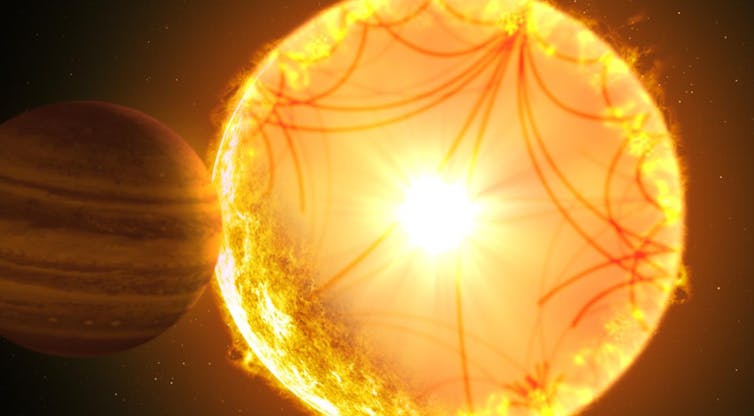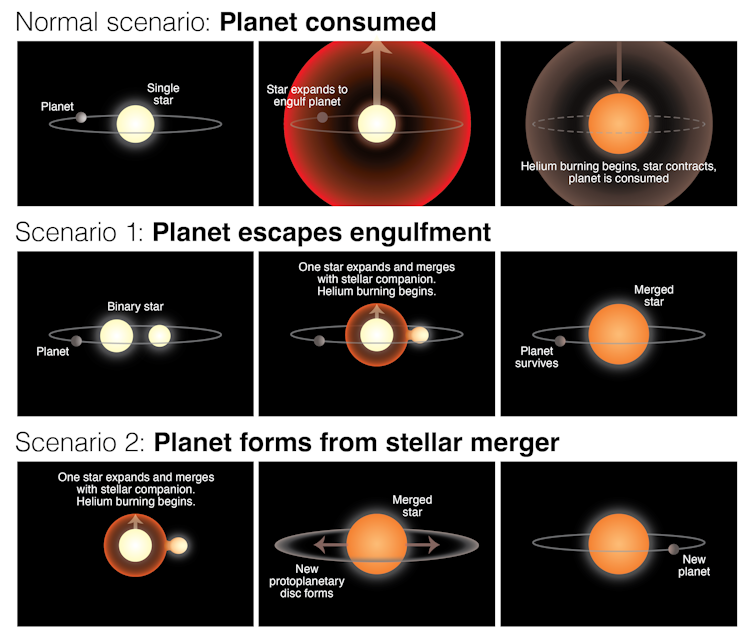Key Takeaway:
Over 5,000 exoplanets have been detected in recent decades, with many researchers focusing on Earth-like planets suitable for life. One such star, Baekdu, is believed to have a planet that it should have devoured in billions of years. The discovery was made by an international team using the “Doppler wobble” technique. Baekdu has already started fusing helium in its core, and the frequencies of the waves indicate it has started burning helium. The discovery raises questions about how Baekdu survived engulfment.
The search for planets outside our Solar System – exoplanets – is one of the most rapidly growing fields in astronomy. Over the past few decades, more than 5,000 exoplanets have been detected and astronomers now estimate that on average there is at least one planet per star in our galaxy.
Many current research efforts aim at detecting Earth-like planets suitable for life. These endeavours focus on so-called “main sequence” stars like our Sun – stars which are powered by fusing hydrogen atoms into helium in their cores, and remain stable for billions of years. More than 90% of all known exoplanets so far have been detected around main-sequence stars.
As part of an international team of astronomers, we studied a star that looks much like our Sun will in billions of years’ time, and found it has a planet which by all rights it should have devoured. In research published today in Nature, we lay out the puzzle of this planet’s existence – and propose some possible solutions.
A glimpse into our future: red giant stars
Just like humans, stars undergo changes as they age. Once a star has used up all its hydrogen in the core, the core of the star shrinks and the outer envelope expands as the star cools.
In this “red giant” phase of evolution, stars can grow to more than 100 times their original size. When this happens to our Sun, in about 5 billion years, we expect it will grow so large it will engulf Mercury, Venus, and possibly Earth.
Eventually, the core becomes hot enough for the star to begin fusing helium. At this stage the star shrinks back to about 10 times its original size, and continues stable burning for tens of millions of years.
We know of hundreds of planets orbiting red giant stars. One of these is called 8 Ursae Minoris b, a planet with around the mass of Jupiter in an orbit that keeps it only about half as far from its star as Earth is from the Sun.
The planet was discovered in 2015 by a team of Korean astronomers using the “Doppler wobble” technique, which measures the gravitational pull of the planet on the star. In 2019, the International Astronomical Union dubbed the star Baekdu and the planet Halla, after the tallest mountains on the Korean peninsula.
A planet that should not be there
Analysis of new data about Baekdu collected by NASA’s Transiting Exoplanet Survey Satellite (TESS) space telescope has yielded a surprising discovery. Unlike other red giants we have found hosting exoplanets on close-in orbits, Baekdu has already started fusing helium in its core.
Using the techniques of asteroseismology, which studies waves inside stars, we can determine what material a star is burning. For Baekdu, the frequencies of the waves unambiguously showed it has commenced burning helium in its core.

The discovery was puzzling: if Baekdu is burning helium, it should have been much bigger in the past – so big it should have engulfed the planet Halla. How is it possible Halla survived?
As is often the case in scientific research, the first course of action was to rule out the most trivial explanation: that Halla never really existed.
Indeed, some apparent discoveries of planets orbiting red giants using the Doppler wobble technique have later been shown to be illusions created by long-term variations in the behaviour of the star itself.
However, follow-up observations ruled out such a false-positive scenario for Halla. The Doppler signal from Baekdu has remained stable over the last 13 years, and close study of other indicators showed no other possible explanation for the signal. Halla is real – which returns us to the question of how it survived engulfment.
Two stars become one: a possible survival scenario
Having confirmed the existence of the planet, we arrived at two scenarios which could explain the situation we see with Baekdu and Halla.
At least half of all stars in our galaxy did not form in isolation like our Sun, but are part of binary systems. If Baekdu once was a binary star, Halla may have never faced the danger of engulfment.

A merger of these two stars may have prevented the expansion of either star to a size large enough to engulf planet Halla. If one star became a red giant on its own, it would have engulfed Halla – however, if it merged with a companion star it would jump straight to the helium-burning phase without getting big enough to reach the planet.
Alternatively, Halla may be a relatively newborn planet. The violent collision between the two stars may have produced a cloud of gas and dust from which the planet could have formed. In other words, the planet Halla may be a recently born “second generation” planet.
Whichever explanation is correct, the discovery of a close-in planet orbiting a helium-burning red giant star demonstrates that nature finds ways for exoplanets to appear in places where we might least expect them.






























